Whale Album: Giants of the Deep
Killer whale mask
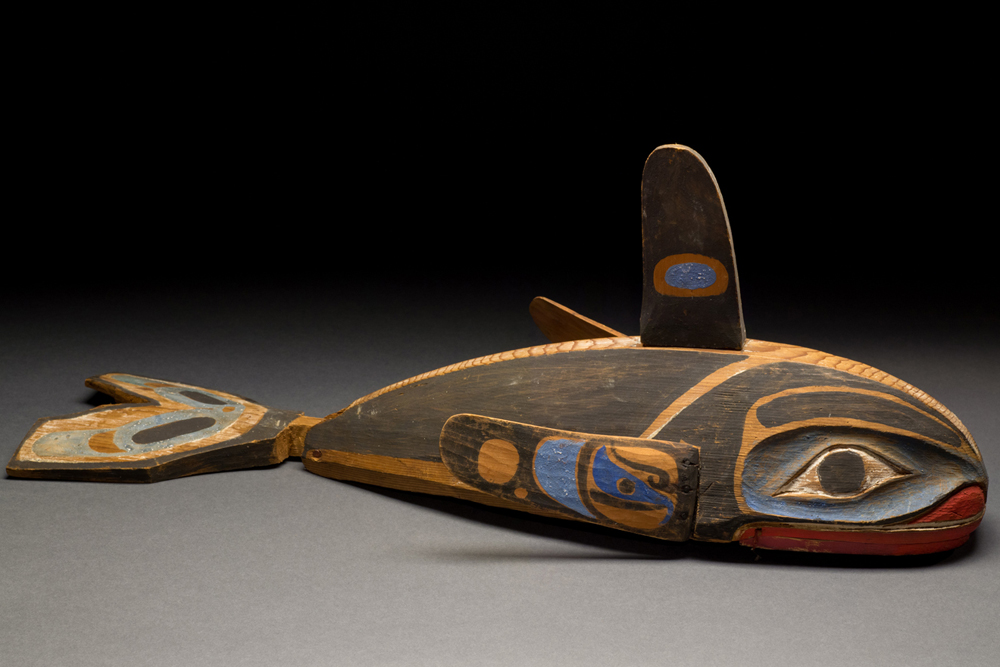
The killer whale plays an important part in stories and ceremonies of the Kwakwaka’wakw, a Native people of Vancouver Island and other coastal islands of British Columbia. A child might have worn this mask in a dance performance, crouching beneath it and bobbing so that the whale seemed to float on the waves.
Ivory narwhal carving
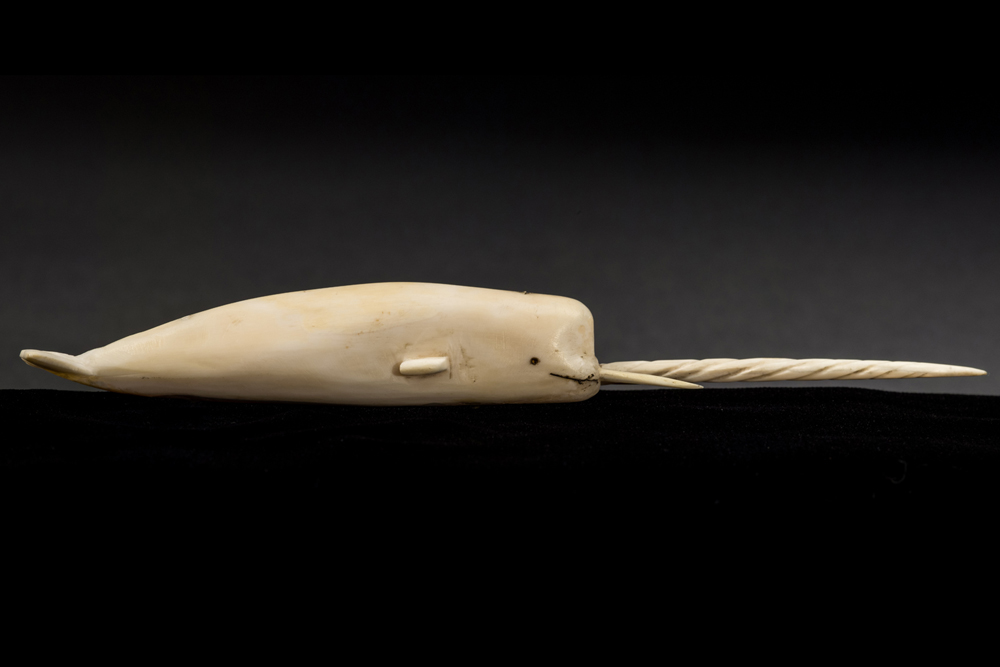
Narwhals are odontocetes, or toothed whales, that thrive under the Arctic ice, periodically coming to the surface or to air pockets under the ice to breathe. A male narwhal usually has one long tusk, which protrudes from its left upper jaw and spirals to the left. In rare cases a tooth on the right upper jaw forms a second tusk, as shown in this delicate ivory figure.
Feast dish
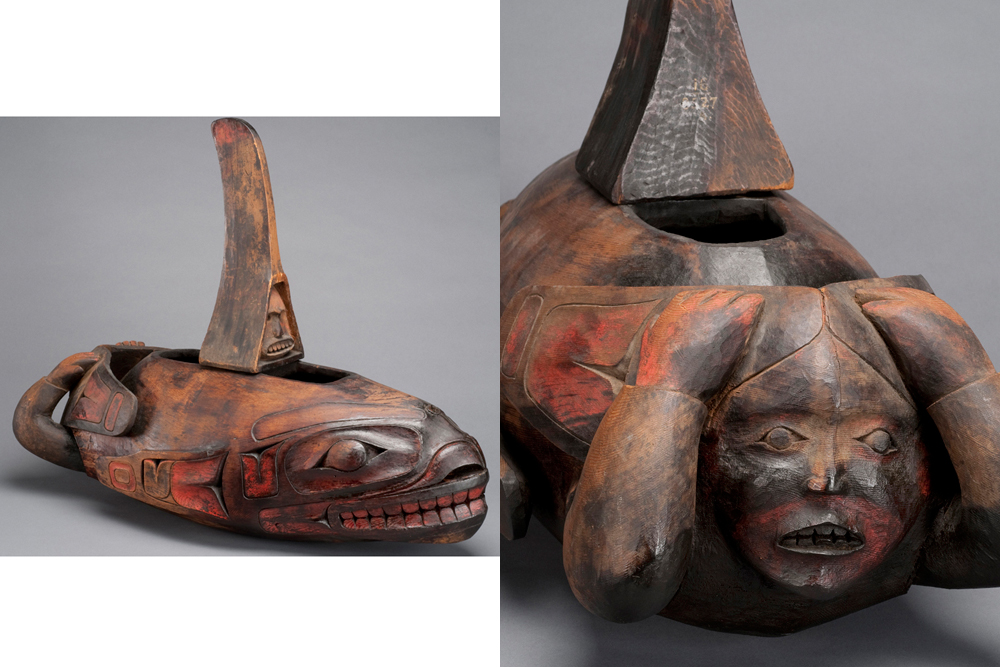
This carved dish represents Siwidi, a hero of the Kwakwaka’wakw people of British Columbia. On one of his adventures, Siwidi travels undersea in a canoe transformed into a killer whale. This dish once held fish oil, and a small tube inside it could spout during ceremonies, just as a whale sprays through its specialized “nostrils” — the blowhole on top of its head.
Beaded killer whale toy

In the Native art of coastal British Columbia and southeast Alaska, the killer whale can represent a family’s clan, a story or a link with the supernatural. Native artists have recreated this powerful animal from many materials, including wood, twine, metal and stone. This unusual beaded killer whale may have been sold as a souvenir.
Soapstone whale carving
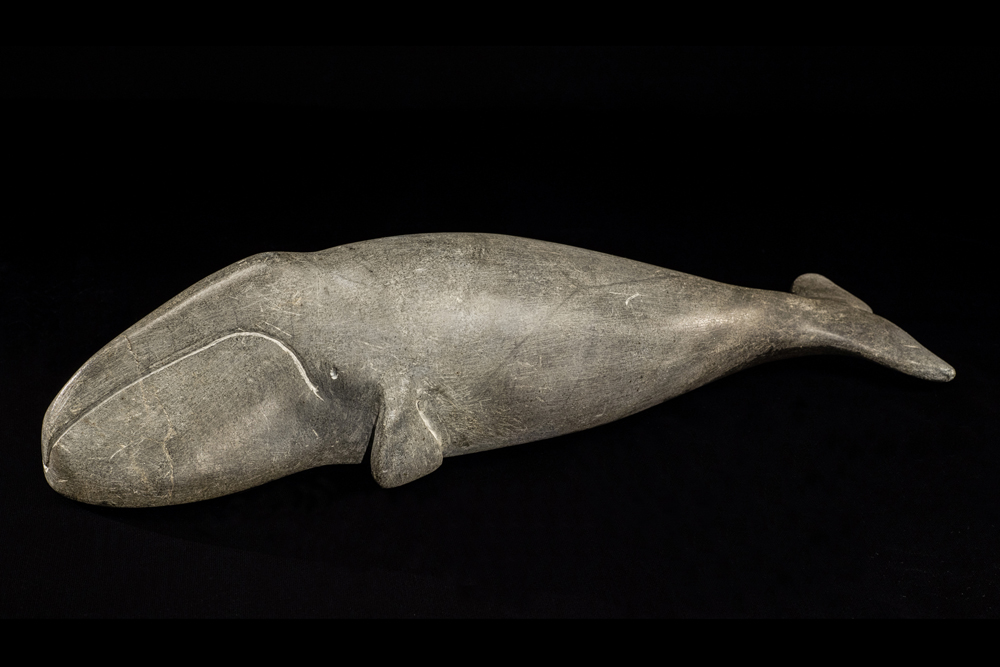
In the 1800s, the Aivilik, whaling people who traditionally lived north of Hudson Bay, began working with New England sailors who whaled in the Arctic. The Aivilik sometimes attached carved whales to their umiaks, or whale-hunting boats, to appease and attract these massive animals. This carving of a bowhead whale might have been a hunting charm, or a sculpture created for sale.
Engraved tusk
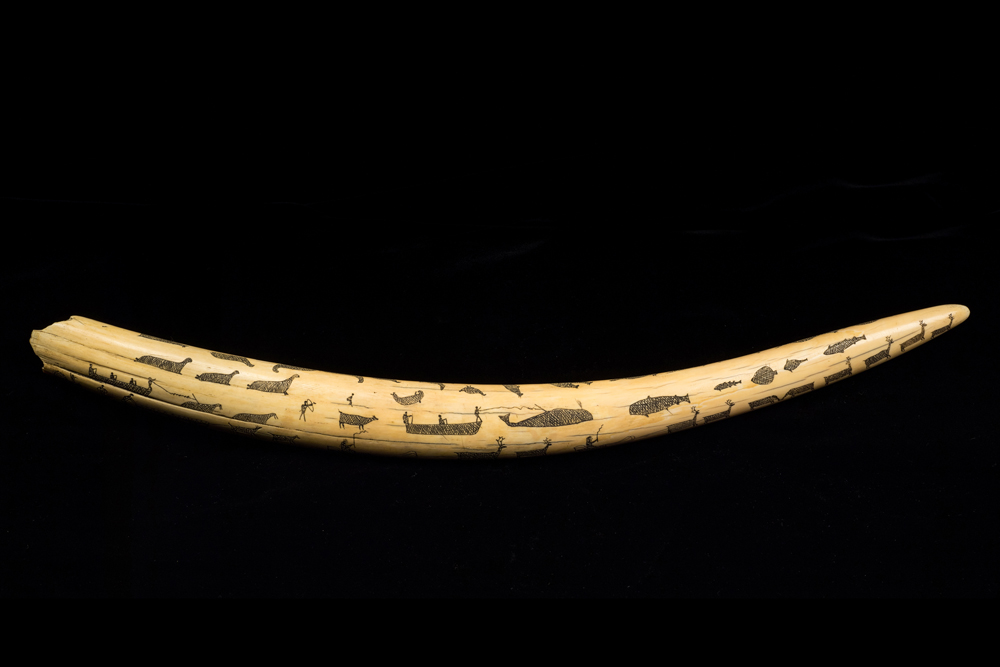
For many centuries, the Inuit of Alaska etched pictures of whales and other animals into bone and ivory tools. After foreigners came to the region, Inuit artists began engraving walrus tusks for sale as souvenirs. This tusk is decorated with images of boats, buildings, animals and people in action, including Inuit hunters harpooning whales.
Hunting helmet
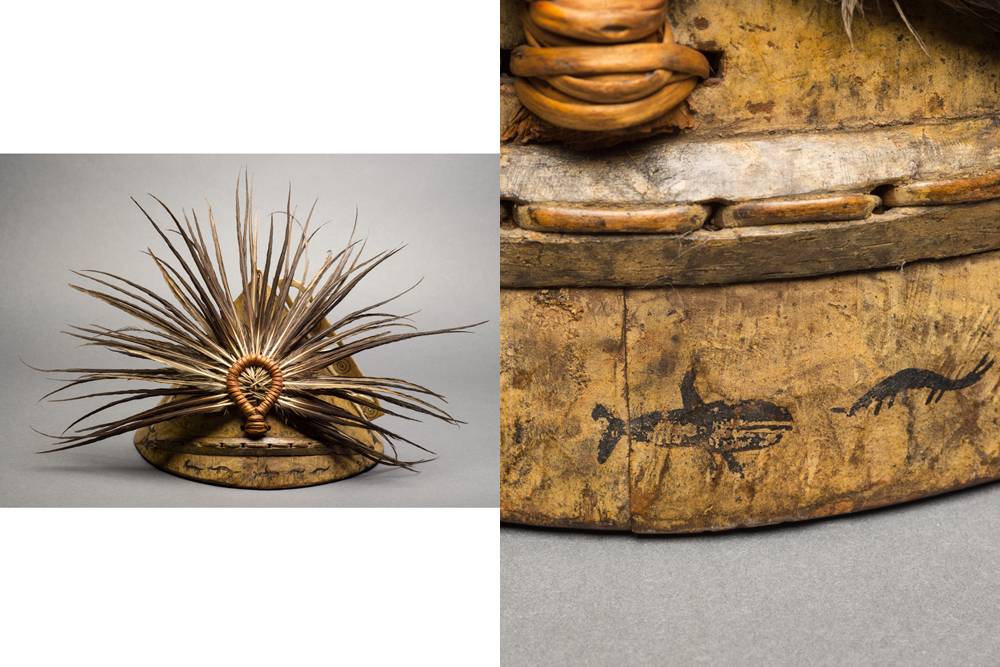
Animals from the land and sea, including whales, decorate this Inuit hunting hat, used at sea to shade the eyes and enhance a hunter’s vision and power. Look for the killer whale painted on the back rim. Some stylized images on the sides and front may be mythical, combining the features of several creatures, including dolphins and baleen whales.
Sign up for the Live Science daily newsletter now
Get the world’s most fascinating discoveries delivered straight to your inbox.
Spoon
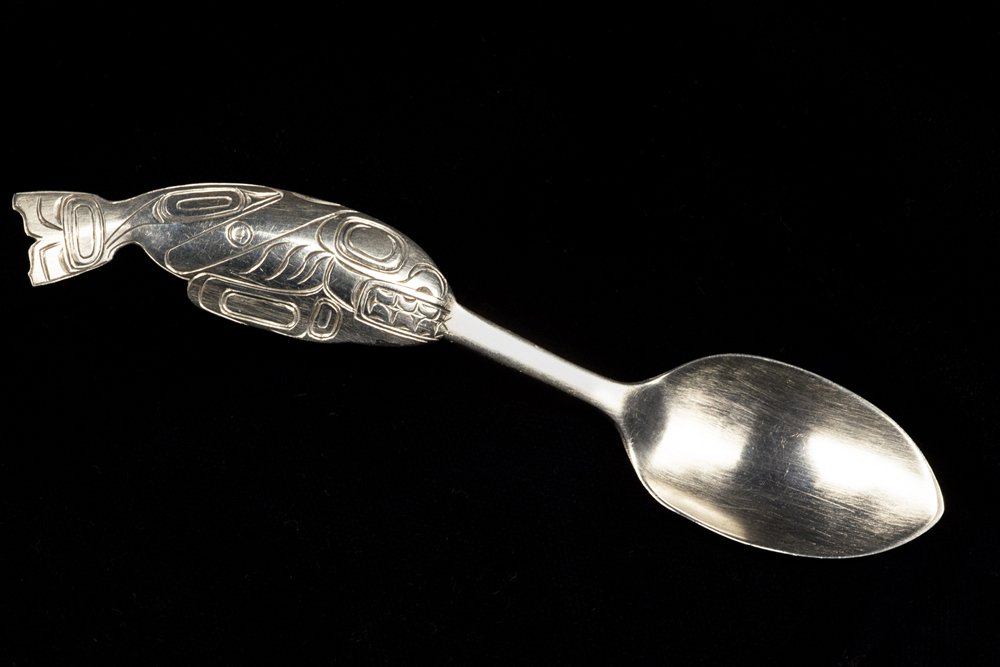
Clans of the Tlingit nation in Alaska and northwestern Canada trace their ancestry to powerful figures in the natural and supernatural worlds, including the imposing killer whale. Over the centuries, the Tlingit have portrayed symbolic animals on totem poles, masks, the walls of houses, and household objects, including items for sale to tourists, like this silver spoon. This spoon was made from a silver dollar, in the Tlingit community of Sitka, Alaska, in 1891.
Double spouted bottle
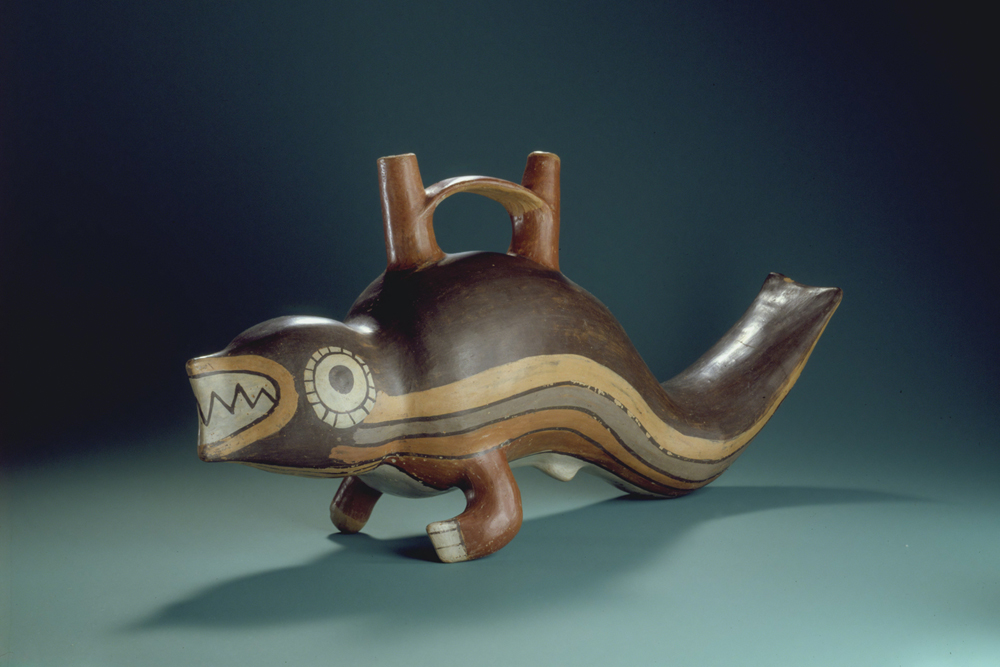
In South America, the Nasca people of southern Peru depicted many creatures in their pottery, including a mythical being based on the killer whale. This killer whale has humanlike hands. Its body was used as a container, perhaps for alcoholic drinks.











